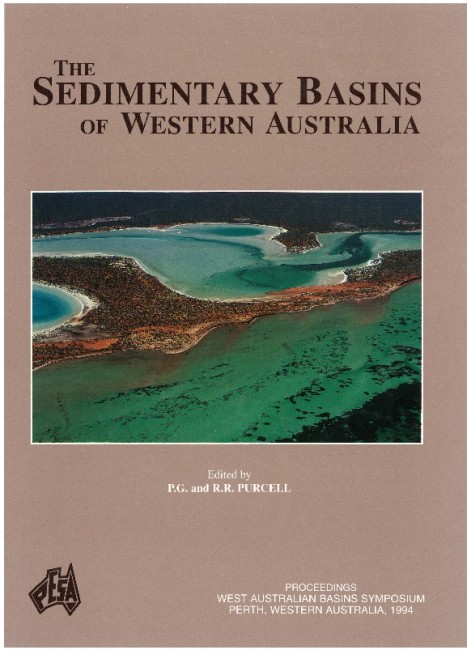Publication Name: The Sedimentary Basins of WA
Authors: H.M.J. Stagg and J.B. Colwell
Publication Volume: 1
Date Published: July 1994
Number of Pages: 27
Reference Type: Book Section
Abstract:
In 1991-92, the Australian Geological Survey Organisation (AGSO) acquired approximately 4500 km of deep-seismic data over the northern Carnarvon Basin on the North West Shelf. These data image basin-forming events down to depths of 10-12 seconds (15-30 km) and allow an interpretation of the foundations of structures that host numerous hydrocarbon accumulations.The northern Carnarvon Basin is a major sag basin that has accumulated at least 12-15 km of sediment fill since its initiation, probably in the Carboniferous. The Palaeozoic and Mesozoic sedimentary fill has a 'layercake' appearance and has been subjected to multiple episodes of faulting, folding, and inversion, especially in the Late Triassic, Jurassic, and Cretaceous. There is little evidence of extension during the Mesozoic; transpressional and transtensional movements appear to be predominant. The only significant disruption to the 'layer-cake' appearance occurs beneath the inner part of the basin, where a major landwards-soling fault system cleaves the basin from Upper Triassic level through to at least the base of the crust. This fault system(the 'Rankin Fault System') extends for more than 500 km along the southeast flank of the basin and, with its antithetic fault system, has served to focus the deposition of major clastic sequences during the Jurassic and Cretaceous.
Integration of the deep-seismic data with limited velocity information from the Exmouth Plateau and the known velocity structure of the Pilbara Craton indicates that the basin is the product of a major episode of lower crustal thinning that lasted from the Carboniferous to the Jurassic. During this thinning phase, almost the entire crust below a mid-crustal discontinuity was removed. Commensurate upper crustal thinning probably took place on the conjugate margin which was removed at breakup.


